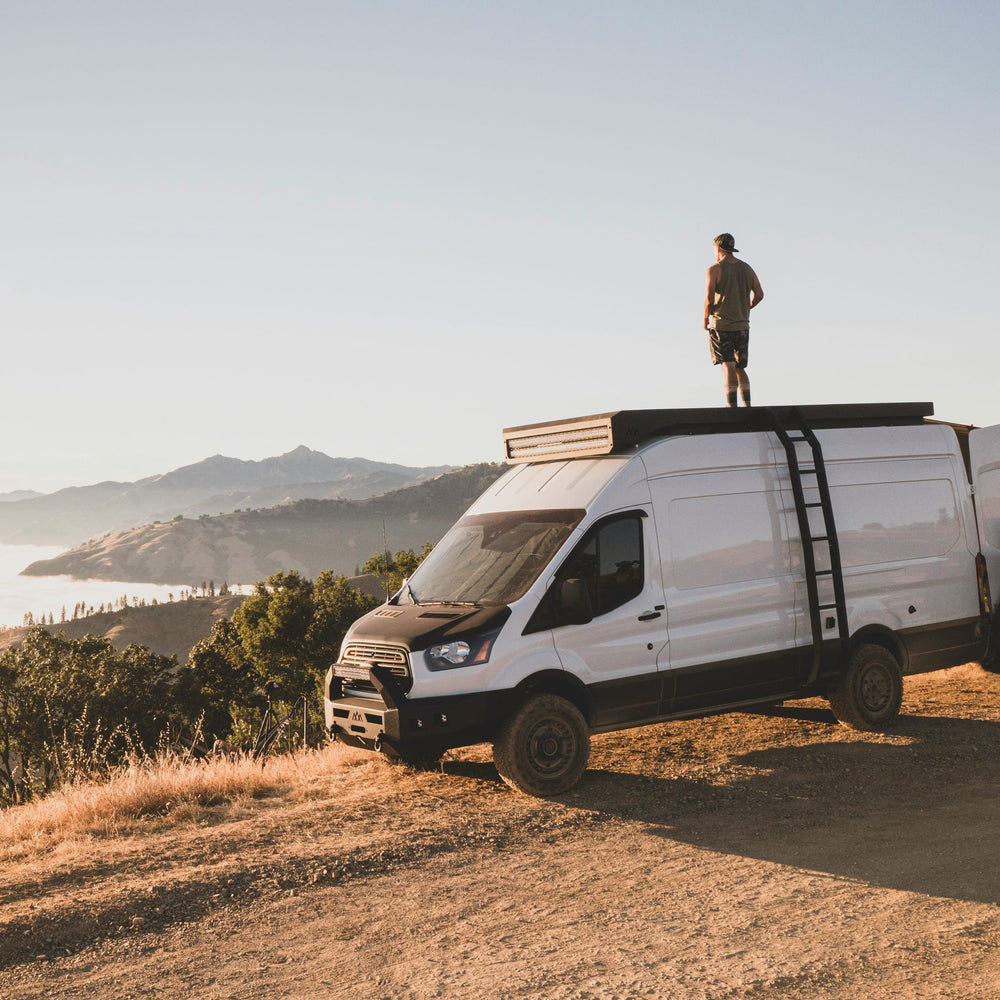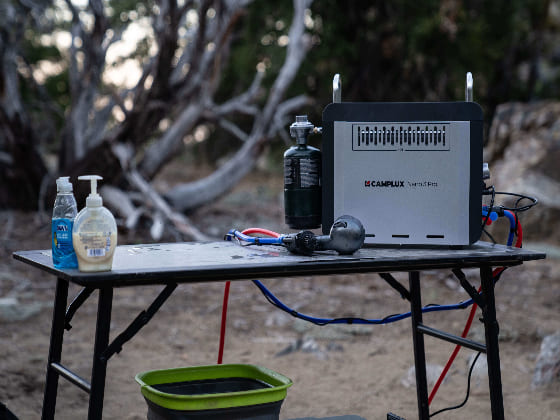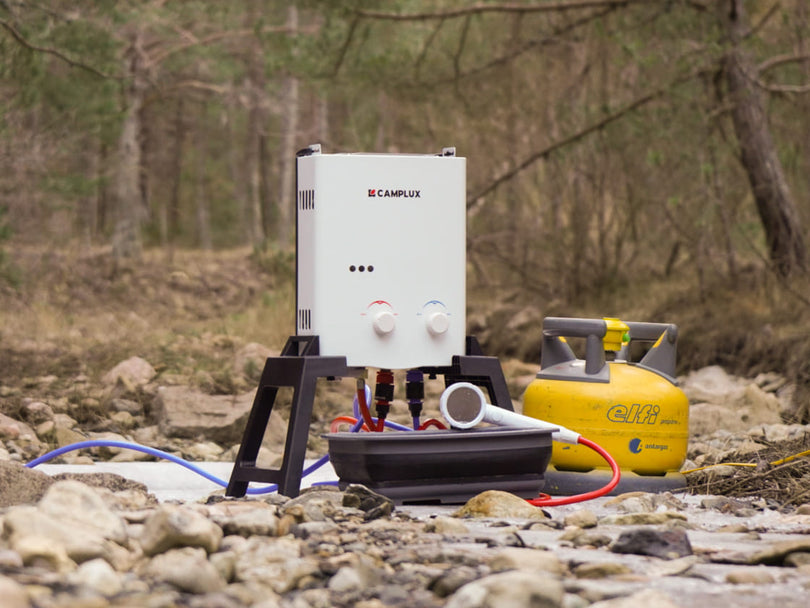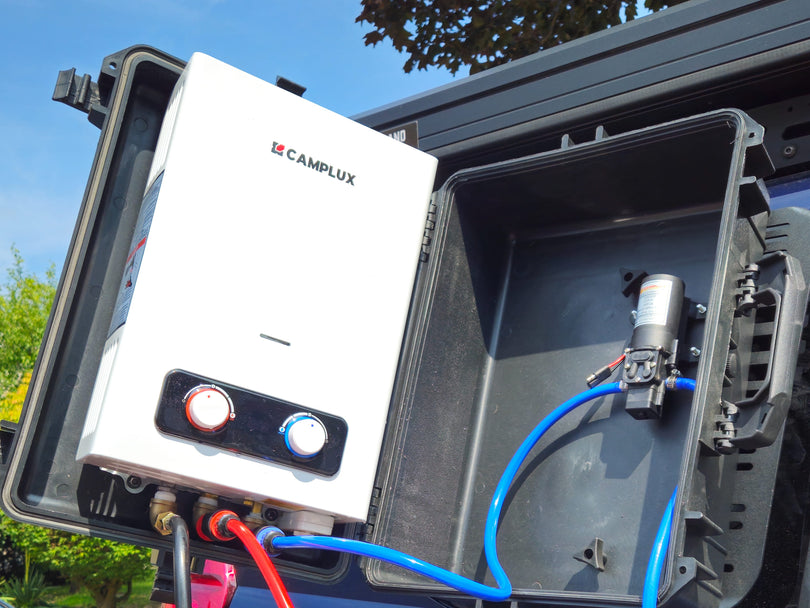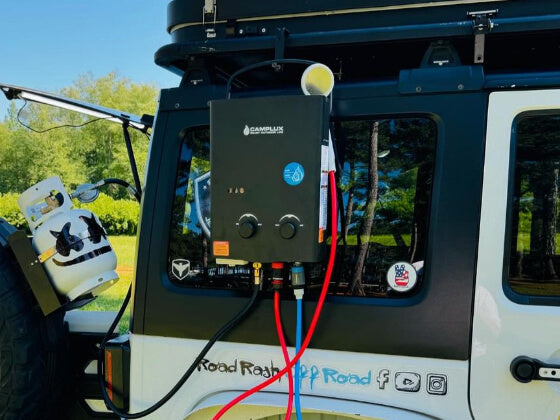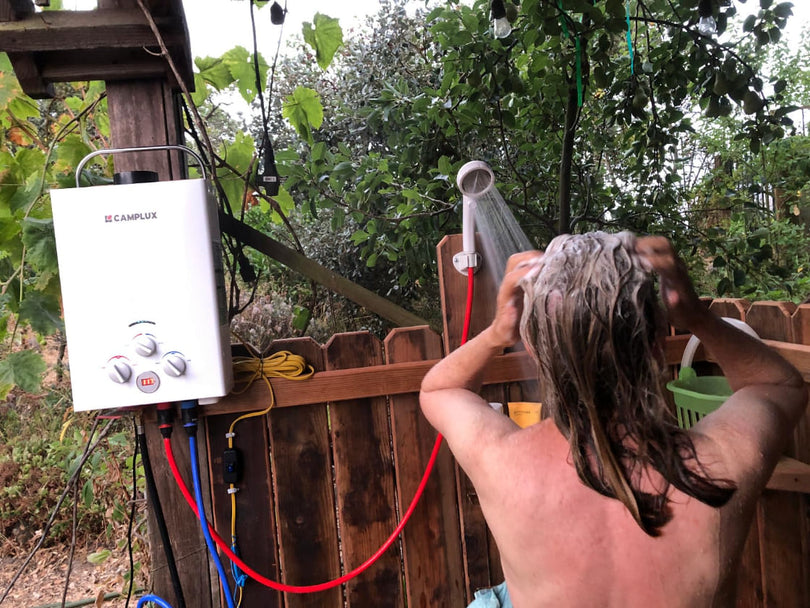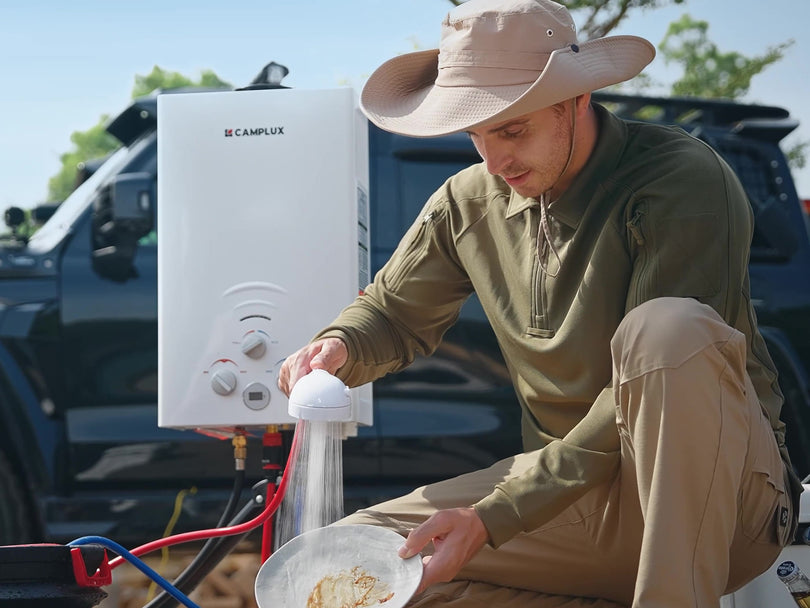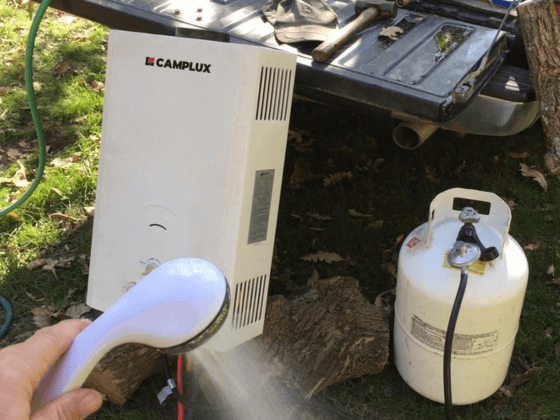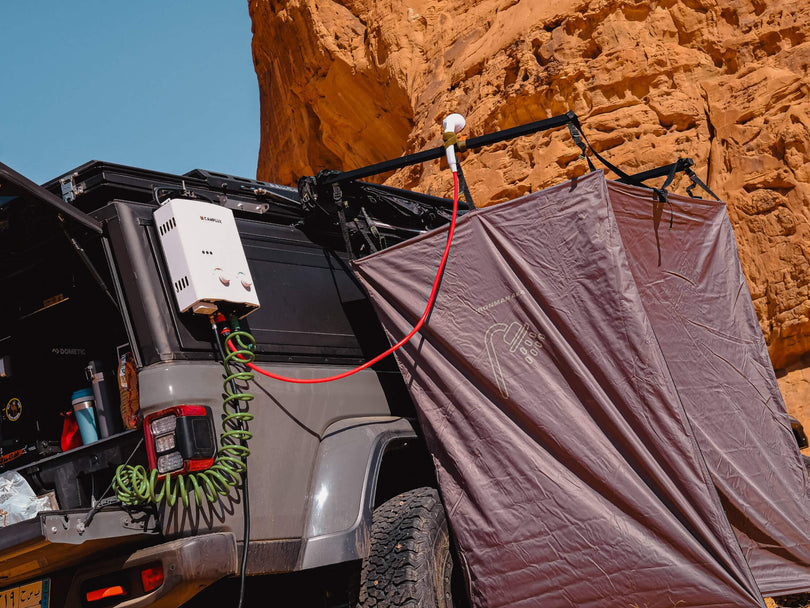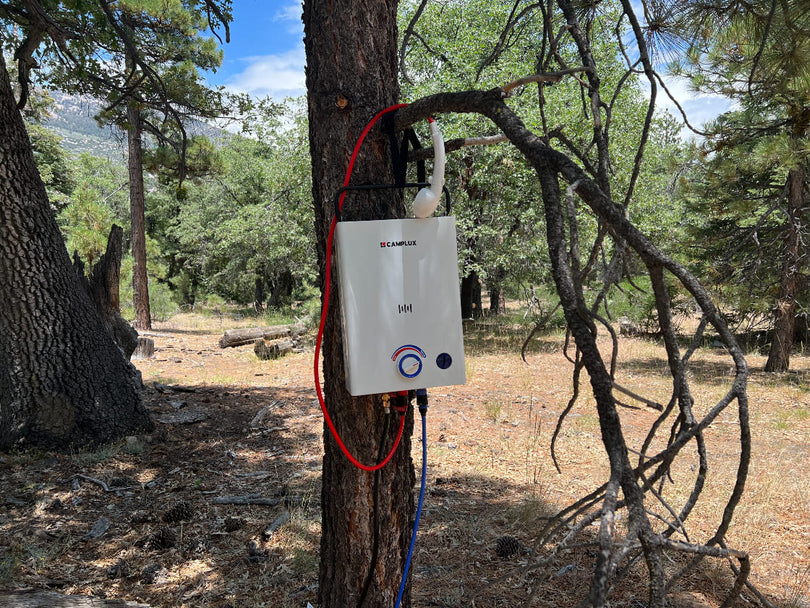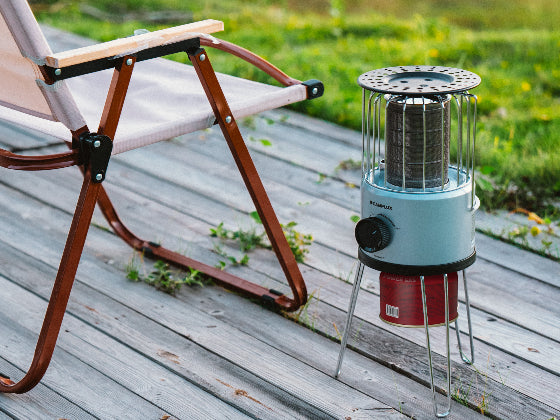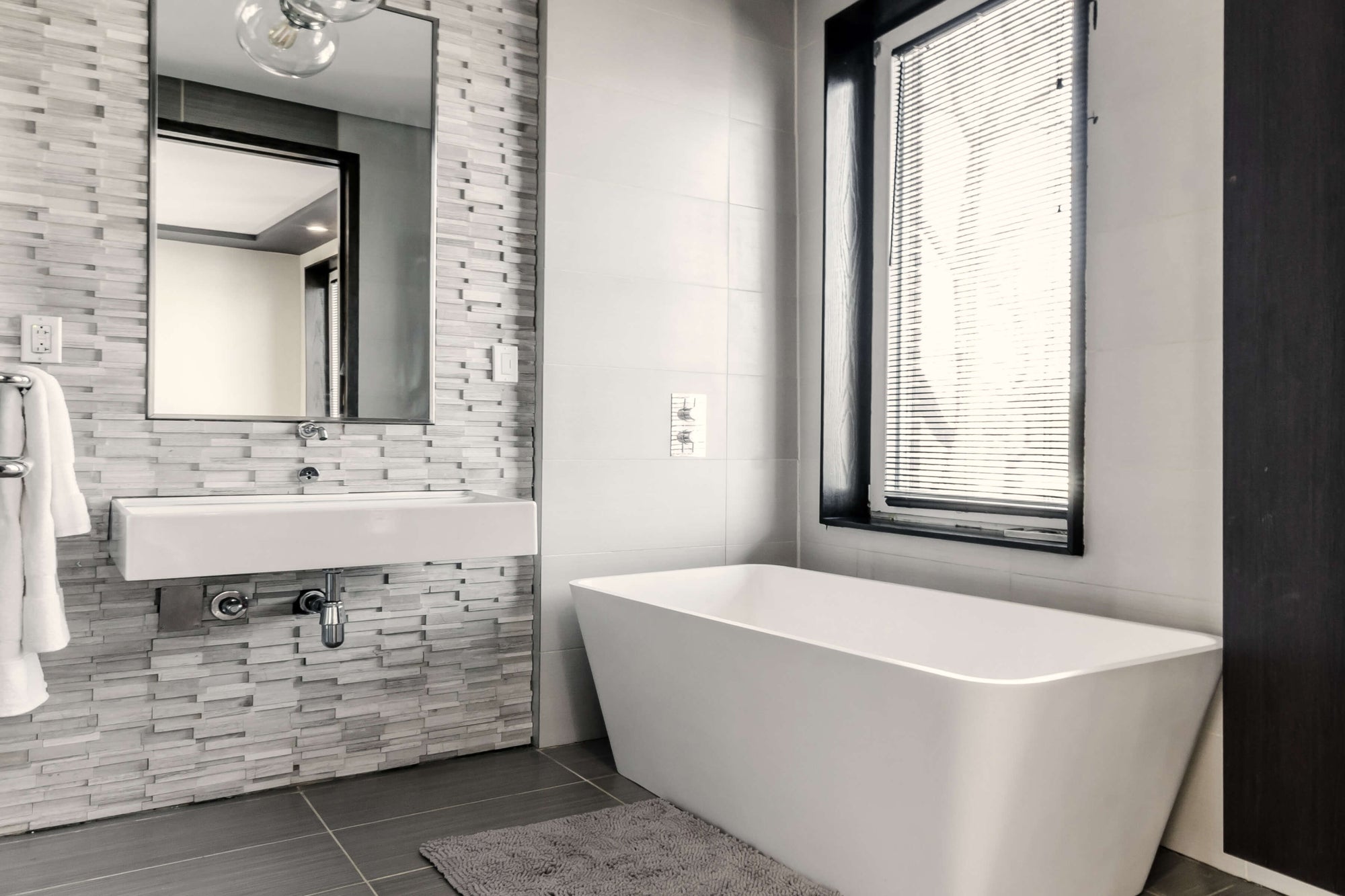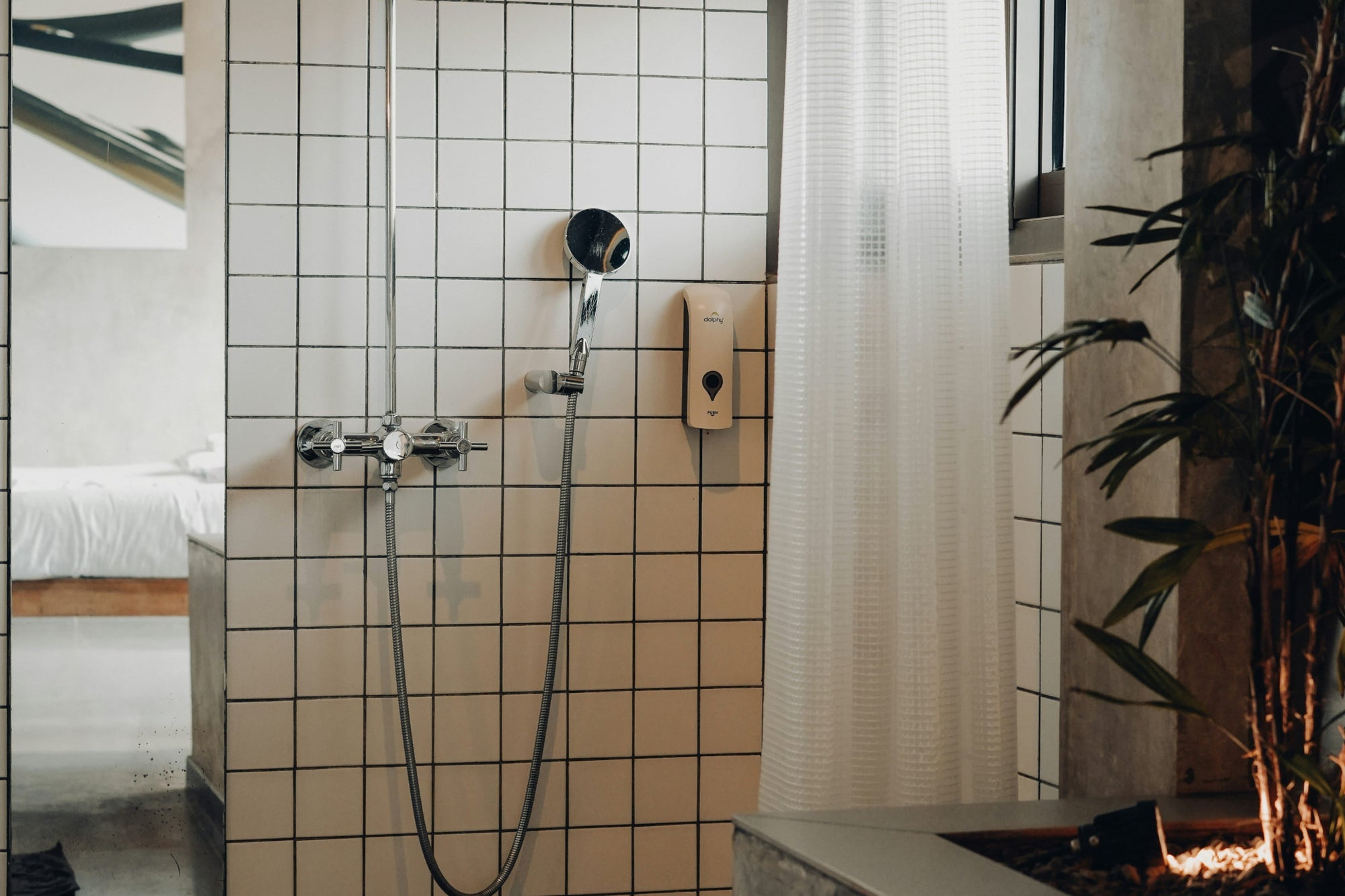Whether you're wild-camping in the Lakes, weekending with a caravan on the coast, or living off-grid, hot water should be simple and safe. This practical guide explains exactly what to do if you ever suspect a gas leak around a portable LPG water heater—especially Camplux favourites such as nano 3pro, AY132, AY132MAX, BW158BC, BW422, and BW528B—and how to prevent problems in the first place.
Although campsite and off-grid setups often use LPG bottles rather than the mains network, those five steps still apply. If there's immediate danger (fire, injury, large uncontrolled leak), dial 999 first, then follow the site's emergency procedure.
First Response: Outdoor & Off-Grid LPG Setups
If the suspected leak is around a portable Camplux LPG heater (for example, AY132 / AY132MAX / BW158BC / nano 3pro):
-
Shut the cylinder valve. If safe, disconnect the regulator from the bottle. Move everyone upwind.
-
Ventilate: outdoors, keep clear space and allow breeze to disperse gas; in awnings or enclosed shower tents, unzip panels fully.
-
Eliminate ignition sources: no smoking, stoves, pilot lights, or sparks. Don't operate lights or phones in the immediate area.
-
Check for hissing/odour only from a safe distance. Do not search with a flame.
-
If the leak persists after closing the valve, leave the cylinder/regulator in place (do not transport a leaking bottle) and call for professional help or the campsite warden.
Quick Model-by-Model Pointers (Camplux)
Camplux nano 3pro – compact, ultra-portable for rinsing kit and quick showers on the move.
What to check: cylinder connection, quick-connect hose, and portable pump fittings (if used). Ensure the unit is operated outdoors with free airflow.
👉 Product: Camplux nano 3pro
Camplux AY132 (5L) & AY132MAX (5L with pump & bag) – lightweight classics for camping and caravanning.
What to check: regulator O-ring, hose clamps, water pump unions (MAX), and shower hose swivel. Mount or hang as per manual so hoses aren't strained.
👉 Products: AY132 | AY132MAX
Camplux BW158BC (6L) – portable with rain cap; popular for garden showers and small cabins.
What to check: vertical clearance for exhaust, secure mounting, and regulator tightness.
👉 Product: BW158BC
Camplux BW422 (16L) & BW528B (20L) – higher-flow units suited to larger setups, tiny homes, or semi-fixed locations.
What to check: adequate ventilation, flue direction (if applicable), and robust hose routing.
👉 Products: BW422 | BW528B
How to Make the Area Safe (Step-by-Step)
-
Isolate gas (cylinder OFF).
-
Ventilate (doors/awnings open, fresh air through).
-
No ignition sources (matches, lighters, switches, engines).
-
Evacuate people to fresh air; supervise children and pets.
-
Call for help: 0800 111 999 for suspected network gas leaks or if unsure; otherwise a Gas Safe engineer for appliance/hose/regulator checks.
Common Leak Sources & Quick Fixes (Temporary Isolation Only)
-
Regulator O-ring worn/flattened → Isolate, replace the O-ring/regulator with the correct LPG type.
-
Hose clamp loosened by vibration (common after towing) → Isolate, re-seat hose, refit clamp to spec.
-
Threaded quick-connect not fully seated → Reconnect and check with soapy water.
-
Over-tightened plastic unions on portable pumps (AY132MAX) → Refit with a new washer.
These are isolation tips only. If you're not 100% confident, use a Gas Safe registered professional.
Where Leaks Happen in the Real World (Camping & Caravan)
-
Transit & vibration: After a drive, re-check regulator nut and hose path before firing up the heater.
-
Awning shower tents: Great privacy, but they trap gas. Always unzip a full panel or operate the heater completely outdoors with free airflow.
-
DIY hose extensions: Avoid mixing hose sizes or non-LPG components. Stick to certified fittings.
Prevention: A Simple Safety Routine
-
Before each trip: Inspect hoses for cracks, perishing or kinks; confirm clamps are snug; test the CO alarm.
-
At setup: Site the heater downwind and clear of canvas; keep the LPG bottle upright and stable; avoid low points where gas can pool.
-
While in use: Never leave the heater unattended; keep flame/ignition sources away; ensure steady ventilation.
-
At pack-down: Close the cylinder valve first to burn off gas in the line, then disconnect; cap ends to keep dust out.
Helpful background on ventilation and CO good practice is available from UK guidance.
UK-Specific Notes (Regulations & When to Call a Pro)
-
Gas Safe Register: For installation or repair work on gas appliances/fittings, use a Gas Safe registered engineer. Keep records for insurance/campsite compliance.
-
CO alarms: Choose units compliant with EN 50291 and follow the manufacturer's siting instructions.
For deeper dives, see Understanding UK Regulations for Outdoor Water Heater Installation and Safety Precautions When Using Outdoor Water Heaters.
Product-Focused Safety Tips
Camplux nano 3pro
- Ideal for quick rinses and light showering off-grid. Use a sturdy hook/stand; avoid strain on gas and water lines.
-
Keep clear overhead and operate in free air.
- Camplux nano 3pro — compact hot water for wild camps.
Camplux AY132 / AY132MAX
- Popular 5L flow for camping showers. Keep pump electricals dry; coil hoses without sharp bends; check swivel seals before each session.
Camplux BW158BC
- Ensure vertical clearance for the rain cap; avoid using under low awnings. Confirm secure, upright LPG bottle placement.
- BW158BC — reliable 6L performance for garden showers and small cabins.
Camplux BW422 / BW528B
- Higher flow demands careful siting and ventilation. Consider semi-fixed brackets; never run in enclosed spaces.
- BW422 & BW528B — bigger flow for tiny homes, RVs and glamping setups.
After the Incident: Checks Before Using Again
-
Replace any suspect part (regulator, O-rings, hose, or connectors) like-for-like and rated for propane LPG.
-
Leak test with soapy water on every joint after reassembly; repeat after the first full heat cycle.
-
CO alarm test and battery check.
-
Record the incident and actions taken; if in doubt, book a Gas Safe inspection.
Plan Ahead: Smart Setup & Seasonal Care
Explore Camplux UK Ranges
For more products and support, visit Camplux UK: www.camplux.uk.
Keep Learning: Recommended Reading (Internal Links)
To strengthen your setup and stay safe, bookmark these practical guides (we've coloured them blue for easy linking):
FAQ (UK-Focused)
Q: Does the 0800 emergency number apply to campsites and caravans?
A: Yes—if you smell gas or suspect a leak and are unsure of the source, call 0800 111 999. They'll advise the next steps. For LPG bottle faults, also alert the campsite/park warden and your cylinder supplier.
Q: Can I use my Camplux heater inside an awning or shower tent?
A: Treat awnings like enclosed spaces; only operate where there's free airflow and follow the manual's distance/ventilation rules. Always use a CO alarm to EN 50291.
Q: Who should service my setup?
A: Use a Gas Safe registered professional for installation or repair of gas fittings and appliances.
Final Word
Portable LPG heaters such as the Camplux nano 3pro, AY132/AY132MAX, BW158BC, BW422, and BW528B are brilliant for UK camping, caravans, tiny homes and off-grid living—provided they're installed and used correctly. Keep to the safety basics, fit a certified CO alarm, and build a pre-use routine. You'll enjoy instant hot water with peace of mind, wherever the road takes you.
